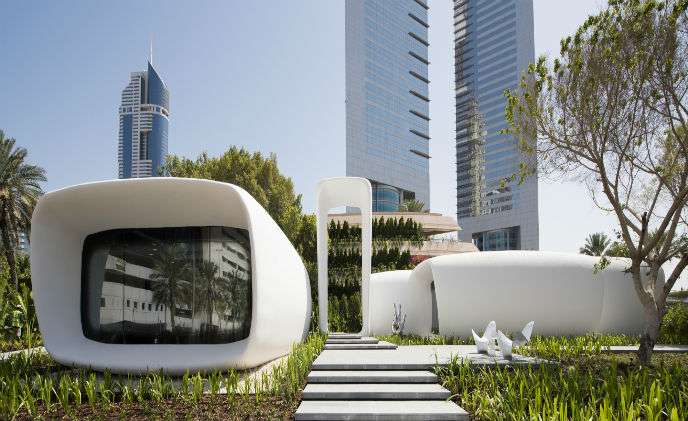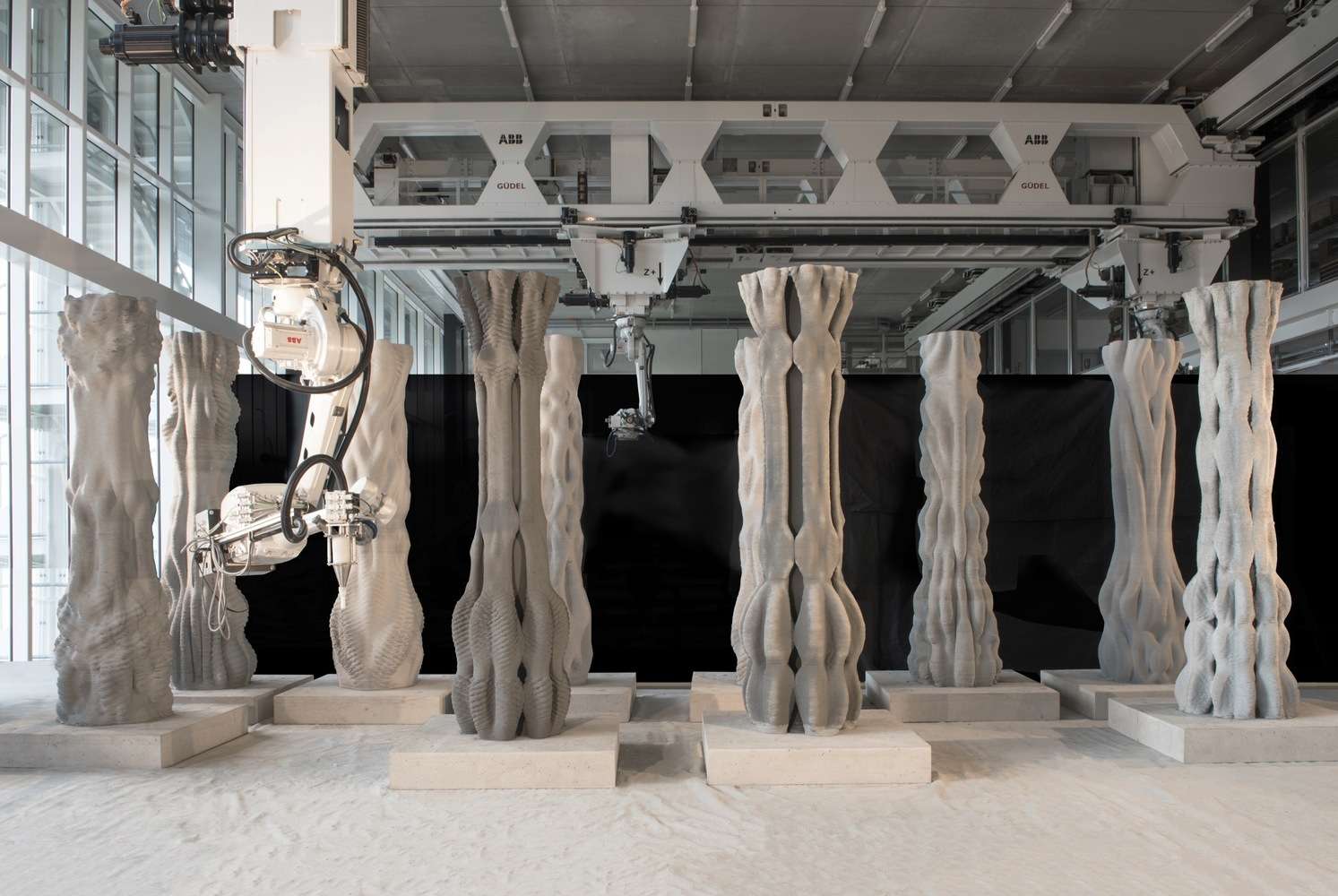In today’s rapidly evolving world, the demand for smart and sustainable infrastructure has become paramount. As cities expand, populations grow, and the effects of climate change become increasingly apparent, the need for innovative solutions to build and maintain resilient, efficient, and environmentally-friendly infrastructure is more important than ever before (Iberdrola, 2022).

Source: Telecommunications Industry Association
Population growth leads to increased demand for infrastructure investment (Albanese, 2018). Innovation in smart, sustainable infrastructure enhances efficiency and resilience by developing new technologies and practices (Chung, et al., 2023). Smart infrastructure integrates advanced tech, data analytics, and sustainability principles to meet present and future needs.
Buildings, on average, are currently responsible for 30 to 40 per cent of total city emissions. Emphatically, to achieve the 2050 emissions target, we need it to be 80-90 per cent lower than it is today. Cities strive to rejuvenate structures and utilise data to optimise energy use and utility management (Deloitte Global). This is where smart and sustainable infrastructure can play a huge role in urban planning.
What is smart and sustainable infrastructure?
Innovation in smart and sustainable infrastructure has the potential to revolutionise the way we design, build, and manage our cities and infrastructure systems (Flynn, 2022). For example, during the pandemic, the forced cessation of travel disrupted the entire supply chain. The biggest challenge for the construction industry was the labour shortage, as most work was onsite. This accelerated developments in new methods, like offsite modular production.
Today, the world is considering moving from mass transit to micro-mobility options (Global infrastructure trends, PwC). Smart building infrastructure can contribute to enhancing micro-mobility options like intelligent parking systems for bikes and scooters, etc. (Micromobility, Smart Cities World). Smart infrastructure utilises technologies like the Internet of Things (IoT), sensors, and data analytics to collect real-time data. This enables remote monitoring of the facility, and control, enabling optimum resource allocation and operational efficiency.

Source: Buildonix
Accordingly, experts suggest it is necessary to strike a balance between resilience (i.e. redundancy, diversity, etc.) and efficiency (i.e. optimised use of resources)(Markolf, Helmrich, Kim, Hoff, Chester, 2022). The smart building strives to enhance the two. Smart infrastructure incorporates redundancy and resilience into its design to mitigate the impact of failures or disruptions. Conversely, redundant systems and backup mechanisms ensure continuous operation; even if individual components fail. For example, a smart water distribution system may have multiple pumping stations and alternative routes to ensure water supply during emergencies or maintenance activities. To drive efficiency, smart infrastructure employs automation and control mechanisms to optimise operations and minimise human error. For example, automated energy management systems can adjust lighting and temperature based on occupancy and ambient conditions, reducing energy waste.
smart and sustainable infrastructure solutions
In 1981, the term “Intelligent Building” was first used by the United Technology Building Systems Corporation (Asadian, et al., 2018). Today, there are many smart building and innovative infrastructure projects and solutions we discuss. Australia’s capital city, Canberra was crowned as the World’s Most Sustainable City in 2021 by the UK company, Uswitch.
Buildings account for a significant portion of energy consumption and greenhouse gas emissions (Commercial Buildings Energy Consumption Baseline Study, 2022). Conversely, the integration of smart technologies and sustainable design principles are transforming the way buildings are constructed and operated. Intelligent building management systems optimise energy usage, monitor indoor air quality, and enhance occupant comfort. Moreover, the use of renewable energy sources such as solar panels and geothermal systems helps reduce reliance on fossil fuels (Brighte Capital).
Another solution is Digital Twin Technology. It involves creating virtual replicas of physical infrastructure systems, allowing for real-time monitoring, analysis, and optimisation (Twi-Global). By combining data from sensors, Internet of Things (IoT) devices, and other sources, it provides insights into the performance and maintenance requirements. This enables predictive maintenance, reduces downtime, and maximises the lifespan of critical infrastructure.

Source: Messe Frankfurt (HK) Limited
It’s all about the Materials
The materials used for constructing the infrastructure has a huge impact on determining sustainability. Green building designs prioritise energy efficiency, use of eco-friendly materials, and integration of renewable energy systems. These approaches minimise the environmental impact of buildings and improve indoor environmental quality (GSA Sustainable Facilites Tool, 2019).
Also, modular building, a.k.a. prefabricated or off-site construction, is a construction method that involves assembling building components or modules in a factory-controlled environment. It is then transported to the construction site for final assembly (Westbuild). The modules can be designed to incorporate energy-efficient features, such as high-performance insulation, energy-efficient windows, and LED lighting systems, promoting energy conservation in the building (Attainable Home, 2023).
Going one step further, smart building solutions should consider not only the connections between the building and its occupants but also the surrounding environment, including smart cities and communities (Vale, et al., 2023). Smart grids integrate renewable energy sources, energy storage systems, and advanced monitoring capabilities to efficiently manage energy distribution, balance supply and demand, and enable grid resilience (IEEE Smart Grid). Advanced technologies such as smart traffic management, connected vehicles, and data analytics optimise traffic flow, reduce congestion, and improve safety. Electric vehicles and charging infrastructure promote sustainable transportation options.
moving forward
Looking ahead, future trends in smart and green building projects will likely focus on even more advanced technologies and integration. This is with the introduction of AI and machine learning algorithms, assisting in producing predictive analytics. This will enable buildings to automatically adjust energy usage and optimise resource allocation based on occupancy patterns and environmental conditions (Alanne & Sierla, 2022). The incorporation of blockchain technology for energy management and carbon footprint tracking is also anticipated.

Source: Axel Crettenand
In addition, the concept of the circular economy will play a larger role, with an emphasis on building materials that are recyclable, reusable, and sourced sustainably (Circular Economy for Building Materials, NREL). Smart grid integration will enable buildings to interact with the larger energy infrastructure, facilitating load balancing and energy exchange. Remote sensing technology paired with smart infrastructure applies a future in urban planning.
Overall, the future of smart and sustainable infrastructure projects lies in the convergence of sustainability, technology, and occupant-centric design. It is essential that we create buildings that are not only environmentally friendly but also intelligent, adaptive, and resilient.
why Is it essential that we focus on smart and sustainable infrastructure?
Not surprisingly, rapid urbanisation leads to major problems for the growing population. Urban sprawling is a concept where heavily populated areas, such as cities, put a major portion of the population at risk of being affected by natural disasters and accidents. As per records, sprawling cities are susceptible to floods, as in the case of New York City, which is sinking due to its infrastructure weight.
We need institutes such as the Global Environmental Facility (GEF) supporting cities with integrated waste management. Prioritising initiatives such as waste-to-energy projects, composting, and improving waste collection and recycling infrastructure. Sustainable water management, water conservation, and wastewater treatment are essential to building a sustainable infrastructure. As a society, technology is diversifying, and with this comes a time for making technology work for us.
achieving the United Nations Sustainability Development Goals (SDGs) and how they link to modern infrastructure
This topic strongly connects to SDG9: Industry, Innovation and Infrastructure. This SDG focuses on creating environmentally-friendly infrastructures, modifying or adapting current infrastructure systems. Harnessing the power of intelligent technologies can significantly aid in diminishing the negative effects on the environment. Additionally, these efforts can enhance resilience, promote efficient utilisation of natural resources, and improve overall sustainability.
Infrastructure is a key aspect of human living. This also links to SDG11: Sustainable Cities and Communities. Information and Communications Technology (ICT) is a major player in bringing innovation to infrastructure. Smart infrastructure contributes to SDG11 by fostering sustainable urban planning. Clean and efficient technologies help reduce the environmental footprint of cities and human settlements (SDG Knowledge Hub | IISD, 2018).
A Thrivable Framework
Imagine sustainability as the foundation of survival, a crucial first step. However, “thrivability” beckons us to venture beyond mere existence. At THRIVE, we firmly believe in humanity’s capacity to rise above with the knowledge we possess. Our mission is to inspire the understanding that sustainable solutions not only avert catastrophe but also unlock the boundless potential for societies to truly thrive and flourish.
THRIVE advocates combining smart and sustainable approaches to create infrastructure systems that are environmentally friendly, economically viable, and resilient to future challenges. Such infrastructure would seek to harness innovation that not only meets the needs of today’s societies, but also ensures a sustainable and prosperous future for generations to come.
It is important to realise that economic progress, innovation and infrastructure growth are all important for the safety and well-being of our society. However, we need to move in a balanced approach, giving equal weight to all. The THRIVE Framework highlights the need to shift. Shifting to a transdisciplinary approach and embracing value-based innovation is a step towards a thriving future.
To learn more about how The THRIVE Project is researching, educating and advocating for political and economic equality and trying to create a future beyond sustainability, visit our website. You can follow our informative, diverse blog and podcast series and learn more about our regular live webinars. Sign up for our newsletter to receive regular updates.























